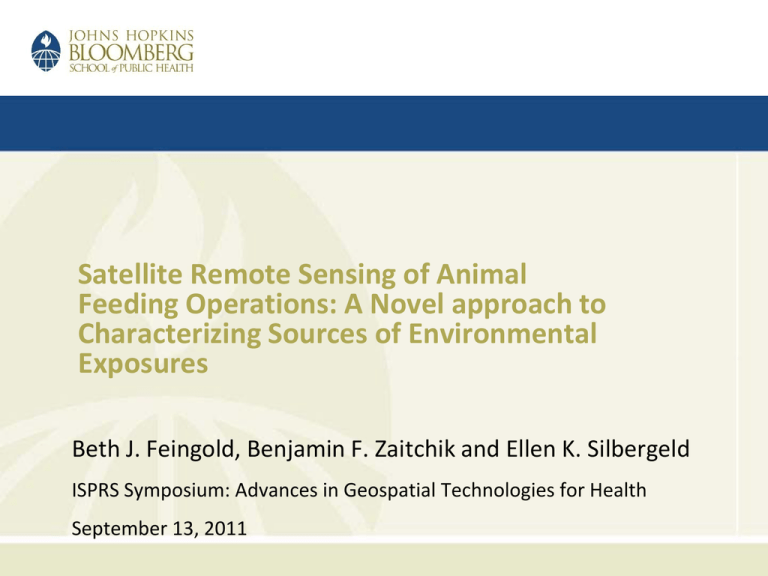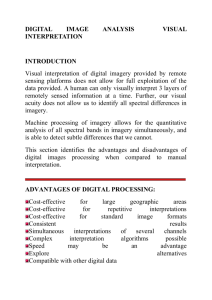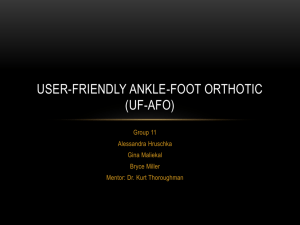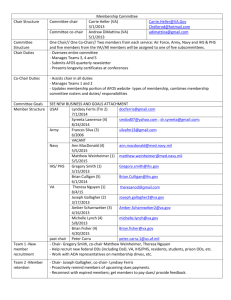Satellite Remote Sensing of Animal Feeding Operations: A Novel approach to
advertisement

Satellite Remote Sensing of Animal Feeding Operations: A Novel approach to Characterizing Sources of Environmental Exposures Beth J. Feingold, Benjamin F. Zaitchik and Ellen K. Silbergeld ISPRS Symposium: Advances in Geospatial Technologies for Health September 13, 2011 Modern Food Animal Production • High density confinement of animals raised for human food • Congregate animals, feed, manure and urine, dead animals, and production operations on a small land area. • Feed is brought to the animals rather than the animals grazing or otherwise seeking feed in pastures, fields, or on rangeland Trends in hog operations in the United States Gray G C , Baker W S Clin Infect Dis. 2011;52:19-22 What are the critical issues? • Air, water, and soil pollution • Antibiotic resistant bacteria • Connecting exposures and adverse health impacts The importance of knowing locations • Environmental modeling and monitoring • Temporal trends in production, land use change, pollution, and associated health impacts • Identifying areas of environmental and health risks • Associating health impacts with location Example: Does an increased density of AFOs on a given regional scale predict environmental health outcomes of interest? Existing Data on Farm Locations 1) Temporality: every 5 years Scale: County and 6 digit HUC How: free to public through website 2) Clean Water Act Section 404: NPDES Permits Temporality: yearly Scale: Individual Farm How: query to State administrator of Permits (ex: DNR, DEP, DEQ) Geographic Location: Duplin County, NC Geographic Location: Duplin County, NC Materials Imagery • IKONOS – June 25, 2003, Anderson Quadrangle, Duplin County – 4 band; Pansharpened: – 164 km2 • Software – Erdas Imagine & Imagine Objective – ArcGIS Project Workflow: Using spatial and Spectral information Multi-Spectral Image Rule-based Classification Blue – Red index NDWI (McFeeters 1996) Spatial Thresholding Restrictions Supervised Classification Spatial Restrictions Accuracy Assessment Panchromatic Image Object Based Feature Extraction Spectral Reflectance Ikonos Bands Spatial Characteristics Taking a closer look… Supervised Classification Supervised classification Producers Accuracy (sensitivity) lagoons barns Users Accuracy (ppv) 75% 93% 52% 63% Object Based Image Analysis Object-based classification Producers Accuracy (sensitivity) Users Accuracy (ppv) lagoons 95% 55% barns 90% 70% Rule Based Classification Rule-based classification Producers Accuracy (sensitivity) Users Accuracy (ppv) lagoons 98% 75% Barns 91% 75% Comparison to previous studies Current Study Garofalo & Jennings (2004) (rule based) Engle (2006) Lagoons PA: 98% UA: 75% (Supervised class (OBIA) and geometric restrictions) PA: 79% n/a UA: 53% Barns PA: 91% UA: 75% PA: 76% UA: 56% PA: 92% UA: 28% Conclusions • Remote Sensing is an accurate, reliable and cost effective tool for mapping AFOs • Can identify more farms with better accuracy than publicly available datasets • I provide a novel methodology for documenting where AFOs exist which provides the groundwork for identifying the relationship between industrial food animal production and health impacts. • This is an important advance; without this info, we cannot connect existence of farms to health in rigorous way. Strengths and Limitations + validation by dividing image + imagery is scalable, publicly available, effective, and captured at regular time intervals + demonstrates the value of high spatial resolution data to environmental issues of national and global extent + method can be used with other sources of imagery, including airborne imagery such as NAIP. - irregularly shaped objects may be missed - accuracy assessment Public Health Implications • Enables longitudinal investigations of land use change and public health impacts • Methodology can be applied to other environmental sources • Enables surveillance of AFOs for use by environmental managers and public health researchers • Informs environmental health policies – Quantitative risk assessment – Siting of AFOs – Emerging infectious disease surveillance policies Acknowledgements • Silbergeld Lab staff and students • Greg Glass and Tim Shields (JHSPH) • Center for a Livable Future Pre-doctoral Fellowship • Delta Omega Honor Society Scholarship • Pew Charitable Trusts





